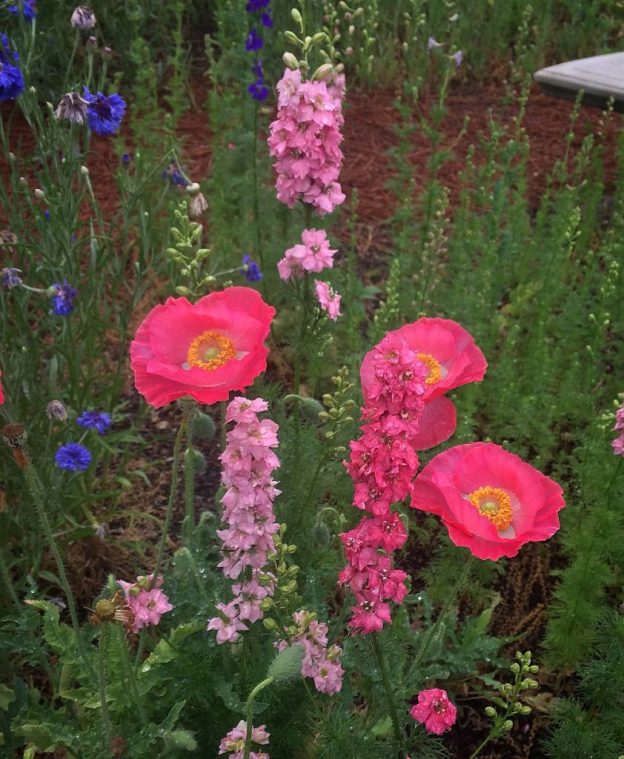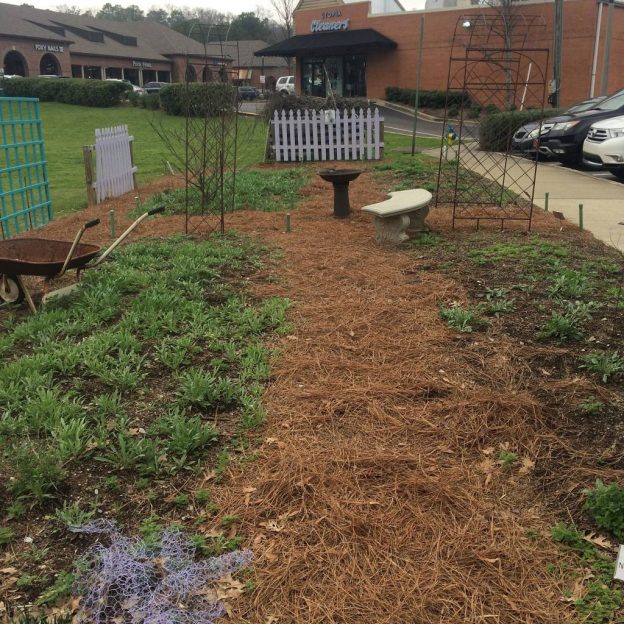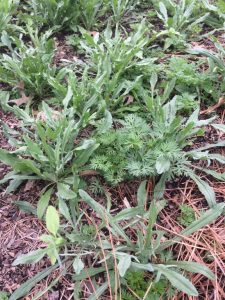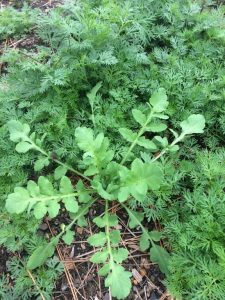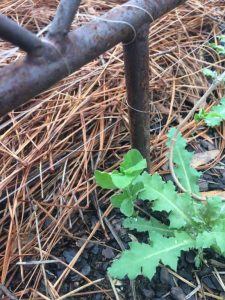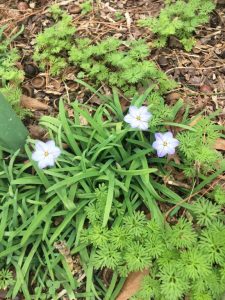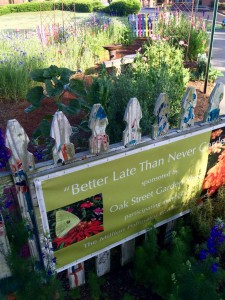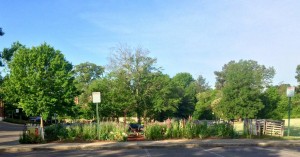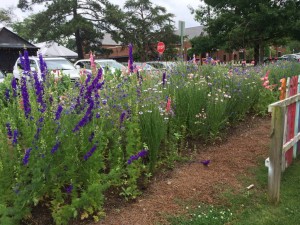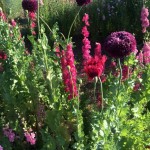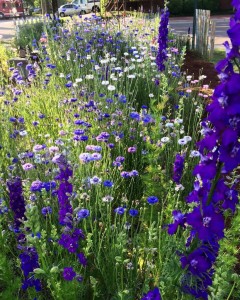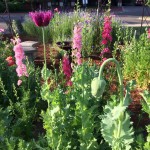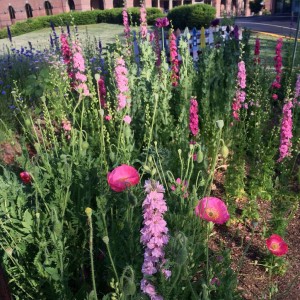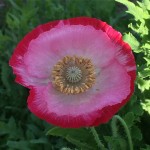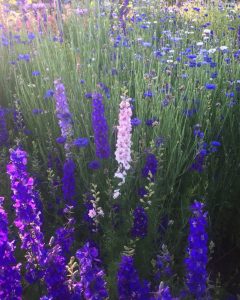 Village Living, our neighborhood newspaper, did a nice story on pollinator gardening that ran in an April issue. It was a very good and informative article, but I fretted that the picture was of me weeding, and not very exciting. What a difference a month makes!
Village Living, our neighborhood newspaper, did a nice story on pollinator gardening that ran in an April issue. It was a very good and informative article, but I fretted that the picture was of me weeding, and not very exciting. What a difference a month makes!
The bachelor buttons are putting on their annual show, tough plants that come back year after year to dazzle with their varied shades of blue, lavender, pink, and white flowers. I throw out more seed each January (I’m too busy during the holidays to sow it any earlier.) of select blooms from the previous year’s garden.
I’m pleased with the larkspur this year and marvel how it is a constant now, though I add more seed of it as well, not quite trusting that it will reappear each year. In May, on a warm morning, I walk through the small space, marveling at the abundance of bloom.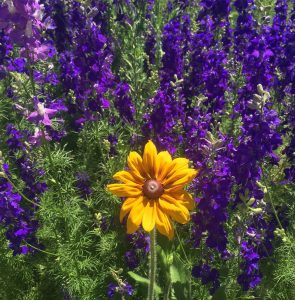
The ‘Indian Summer’ rudbeckia (Black-eyed Susan’s) have returned and are blooming. This is exciting, as I wasn’t sure if they’d be cold hardy in this open area. They’ve not only returned, but have sown themselves in another spot as well. Excellent, I think.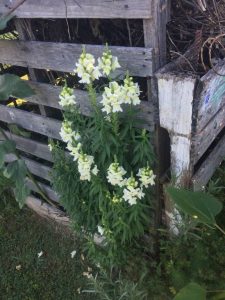
I move on, strolling around the corner of the back bed beside the compost bin. There’s a verbena blooming that I didn’t plant – I’d noticed it for the first time last year, and here it is again, a lovely lavender flower carpeting the ground beneath the blooming bachelor buttons.
I glance to my right and see a white snapdragon, clinging to the edge of the compost bin, a virtual annual espalier, only surviving the city worker’s weedeaters by hugging the weathered wood. We’re having to take the old compost bin out, it’s looking pretty ramshackle, and folks are beginning to throw trash in it. So many survivors have seeded themselves around it, and I’ll miss the surprises it offered.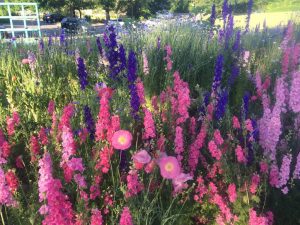
I know that soon the onslaught of heat will be too much for these winter beauties and they’ll begin to flag. I already see signs of summer’s encroachment; sunflowers and zinnias have sprouted and grown from dormant seeds that have taken advantage of spring sun and warm soil.
I stroll and strive to savor every moment. Motionless, I watch honeybees move from poppy to poppy, blurring my eyes to better see the morning sun shining through the beds of blue and pink. Gardens are transient and I know in another month (because this garden is “better late than never”) when the seeds for the summer garden are finally sown, this early morning vision will be a distant, beautiful memory.
By Kris Blevons

